

|


|
|
1/10 Scale Electric Buggy:
Kyosho Optima - 3032
|
Introduced by Kyosho in 1985, the 4WD Optima - # 3032 - has the same basic chassis as the Turbo Optima, Optima Pro, Javelin and Salute.
The Model has an alloy ladder-frame, double deck chassis and is chain driven, with gear type differentials, dogbone drive-shafts, coil spring over oil filled dampers, mechanical speed controller, 540 electric motor, lexan polycarbonate bodyshell and bushing ring type bearings.
There was some confusion concerning the original Optima kit number, when a batch of Japanese language manuals were released with the kit number 4032 - instead of 3032, this was later rectified.
Check out our Kyosho Archive for other Vintage Car models.
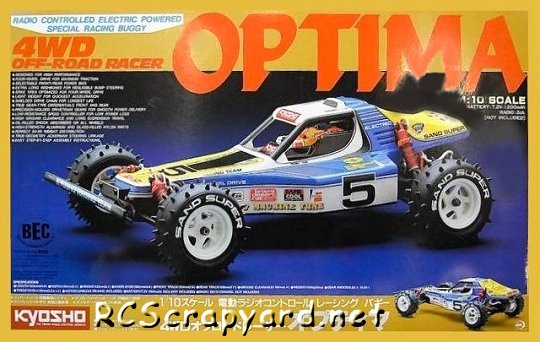
To race the Kyosho Optima, you need to tweak and adjust all you can to give your car improved handling, stability and grip to ease around the curves and keep you on the track. One little setting change can transform your car into a world beater. Just follow our chart to attain the most favourable Set-up to suit your particular needs on any track.








|
|
|

★ Kyosho Optima 3032 ★
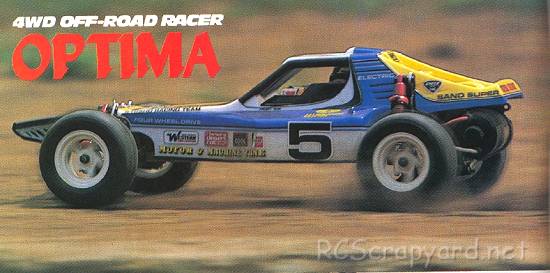
★ Kyosho Optima 3032 ★
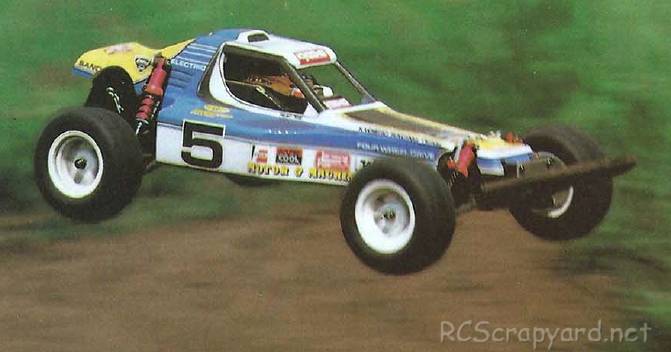
★ Kyosho Optima 3032 ★
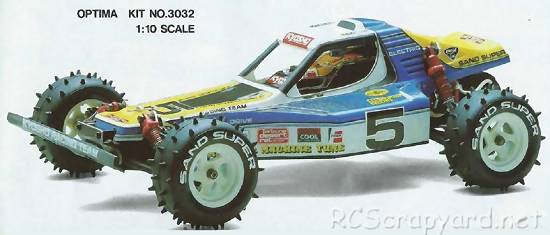
★ Kyosho Optima 3032 ★
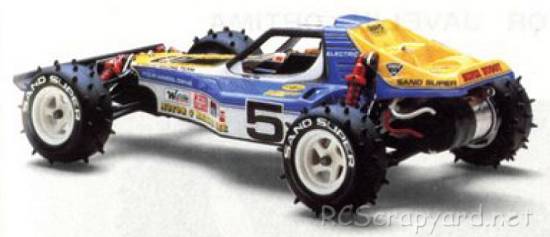
★ Kyosho Optima 3032 Chassis ★
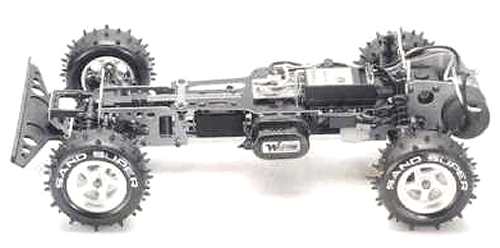
★ Kyosho Optima 3032 Chassis ★
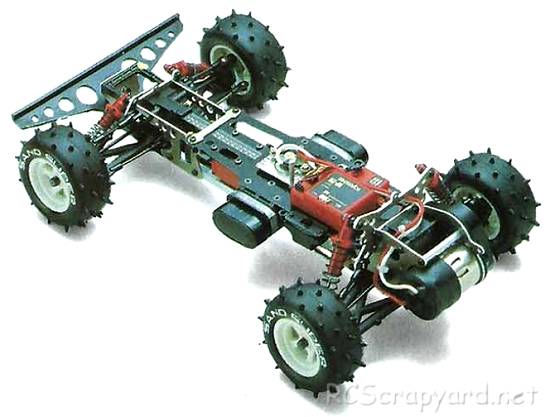
★ Kyosho Optima 3032 Chassis ★
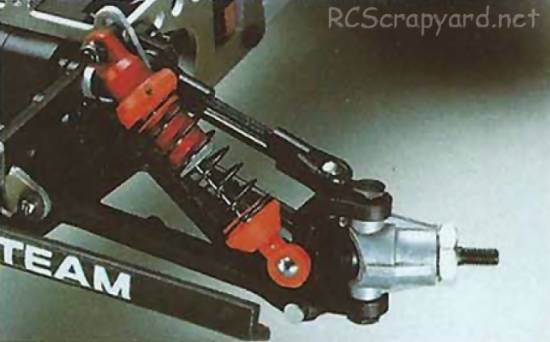
★ Kyosho Optima 3032 Chassis ★
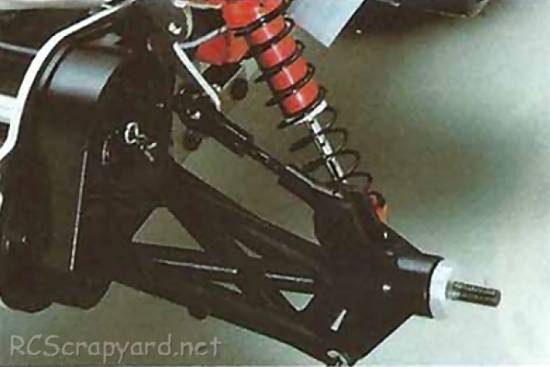
★ Kyosho Optima 3032 Chassis ★
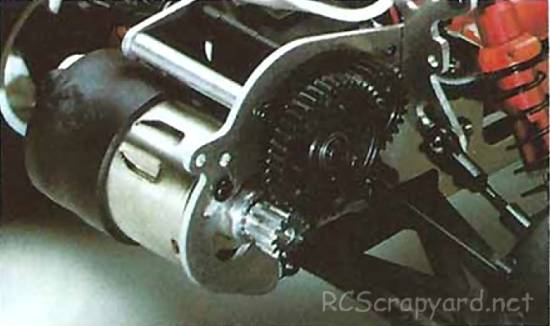
★ Kyosho Optima 3032 Chassis ★
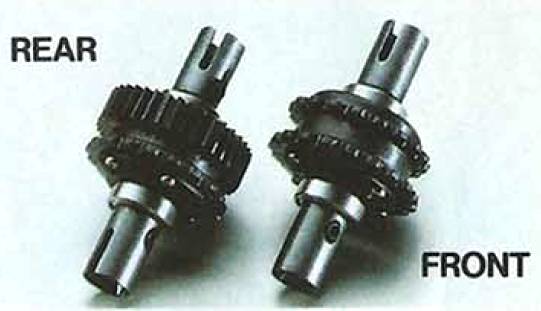
★ Kyosho Optima 3032 Chassis ★
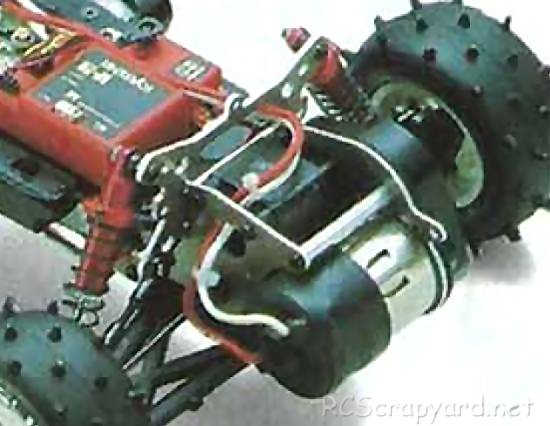
★ Kyosho Optima 3032 Chassis ★
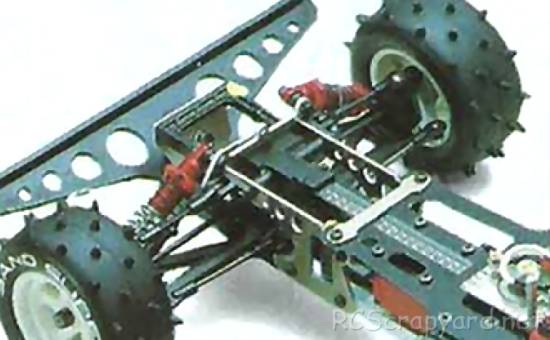
★ Kyosho Optima 3032 Chassis ★
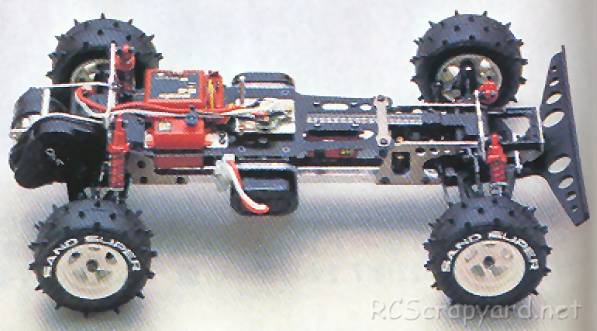
★ Kyosho Optima 3032 Chassis ★
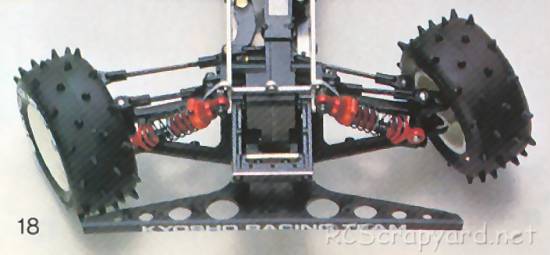
★ Kyosho Optima 3032 Chassis ★
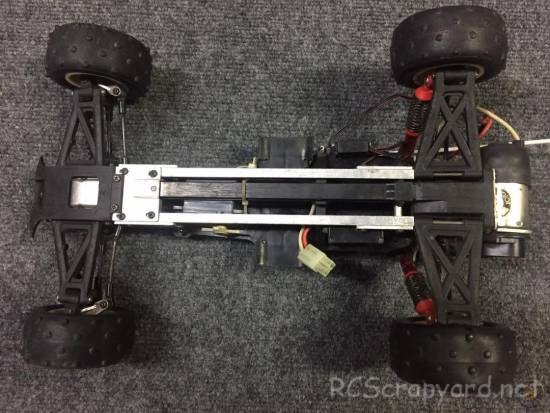
★ Kyosho Optima 3032 ★
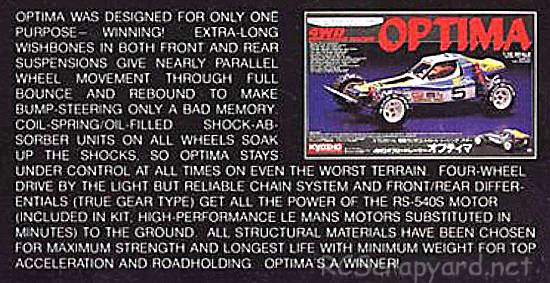
★ Kyosho Optima 4032 Manual ★
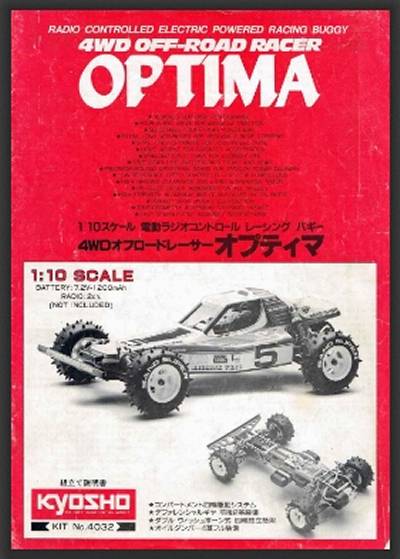
★ Kyosho Optima - Team Drastic ★
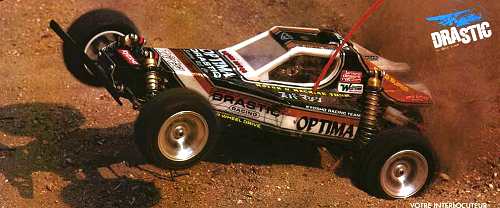
|
Buying a Used Kyosho Optima Buggy (and What to look for)
Make a General Visual Inspection
Check the Body-Shell
If the body shell of your Kyosho Optima is broken, ripped or damaged in any way, this can be easily repaired with rubber solution glue. Also, for added protection and if available for your Optima model, fit an under guard to stop dirt and gravel entering the chassis. Drive Shafts and Turnbuckles
Examine the Drive System
The gearbox of your used Buggy should be opened up to check for gear wear and lubrication. A thin coat of grease is often used on internal gears and although this is fine for basic running around on the back yard, if you intend to race your Buggy at a higher level, this should be removed and replaced with racing oil (ZX1 or Teflon Oil). Of course, this should be reapplied after each race meeting. Pinions and Spur Gears
Don't Neglect the Ball-Joints
Ball joints always cause problems. For top level Electric Buggy racing, the plastic ball connectors should be checked and if deemed necessary changed after every meeting. A simple thing like a loose fitting connector popping off could easily end your race, so better safe than sorry. Steering Servo and Servo-Saver
Stabilizers
If body roll on your Kyosho Optima is a problem, handling can be improved with the use of stabilizers, anti roll or sway bars, stiffer tuning springs and, or, thicker silicone oil in the dampers. Don't Forget those Bearings
▼ Scroll Down for More Articles and Advice ▼
Or, check out our RC Model Car Setup Guide
|
|
Manufacturers and Brands Catalogued, Listed and Reviewed by RC-Scrapyard.
At present, the RC Model Manufacturers, Brands and Distributors covered by us are: ABC Hobby, Academy, Acme Racing, Agama Racing, Amewi, Ansmann Racing, ARRMA, Team Associated, Atomic RC, Axial, AYK, Bolink, BSD Racing, Capricorn, Carisma, Carson, Caster Racing, Cen, Corally, Custom Works, Durango, Duratrax, ECX - Electrix, Exceed RC, FG Modellsport, FS-Racing, FTX, Fujimi, Gmade, GS-Racing, Harm, HBX, Helion, Heng Long, Himoto Racing, Hirobo, Hitari, Hobao, Hong-Nor, Hot Bodies, HPI, HSP, Intech, Integy, Jamara, JQ Products, Kawada, Kyosho, Losi, LRP, Maisto, Mardave, Marui, Maverick, MCD Racing, Megatech, Mugen, New Bright, Nichimo, Nikko, Nkok, Ofna, Pro-Pulse, Protech, PTI, RC4WD, Redcat Racing, RJ-Speed, Robitronic, Schumacher, Seben, Serpent, Smartech, Sportwerks, Step-Up, Tamiya, Team-C Racing, Team Magic, Thunder Tiger, Tomy, Top Racing, Traxxas, Trinity, Tyco, Vaterra RC, Venom, VRX Racing, WLToys, X-Factory, Xmods, Xpress, Xray, XTM, Yankee RC, Yokomo, ZD Racing and Zipzaps. |
|
Hints, Tips and Information
Bearing Seals
If you were to ask anyone with a modicum of experience in RC, they will tell you that the best modification you can make to a basic RC model, is to add a set of ball bearings. |
|
Hints, Tips and Information
Damper Pistons
When you first build your RC model, you will sometimes find that there are a number of different pistons in the kit, with varying numbers of holes or hole sizes in them. Generally, the manufacturer will suggest one particular piston in the car manual, and may provide you with a mid range oil weight, but depending on the type of terrain you intend to race your model, their suggestion may not be the best for your needs. |
|
RC Models:
|
Radio & Motors: |
Other
Accessories: |